Tim FreemanMay 24, 2020
Tag: Powder Flow , Tim Freeman , Freeman Technology , FT4 Powder Rheometer®
Powder rheology is used in a wide range of industries to support new product development and manufacturing. By investing in powder rheology, manufacturing sites can establish an understanding of their processes and unit operations based on a correlation between measurable powder properties and process performance. Changes in suppliers and/or equipment (for example, lower cost raw materials or process scale-up) can lead to variations in certain properties of the powder, even if other properties, such as particle size distribution remain unchanged. These changes can lead to process challenges, such as blockages, poor product uniformity and greater mass or volume variation in portioned batches.
By measuring and understanding powder behaviour, these challenges can be overcome, and effective decisions on changing raw materials or production methods can be made.
FT4 Powder Rheometer®
The FT4 Powder Rheometer® is a universal powder tester that provides reliable, comprehensive and process relevant measurements of bulk material properties. This information can be correlated with process experience to improve processing efficiency and aid quality control. Specialising in the measurement of dynamic flow properties, the FT4 also incorporates automated shear cell tests, and the ability to measure bulk properties such as density, compressibility and permeability, enabling a comprehensive characterisation of powders in process relevant conditions.
CASE STUDY 1 – The Impact of Manufacturing Location
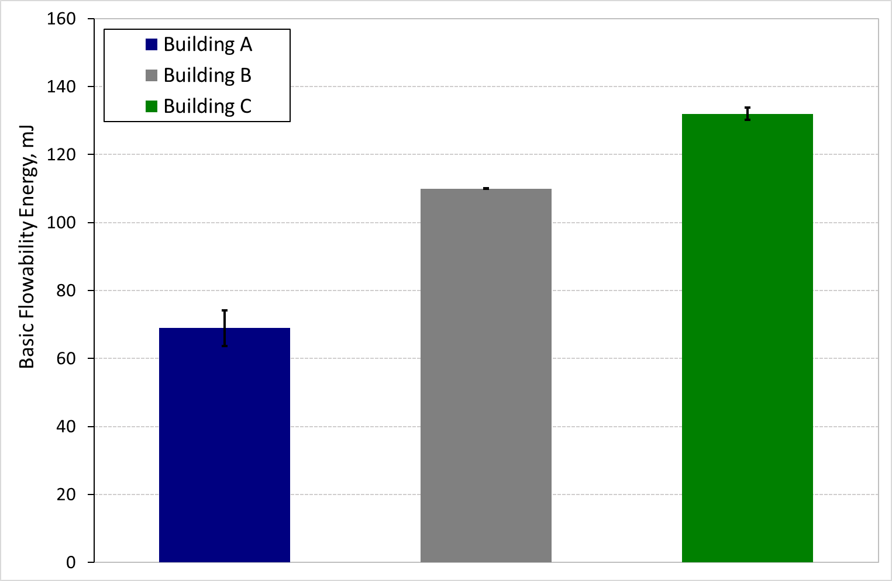
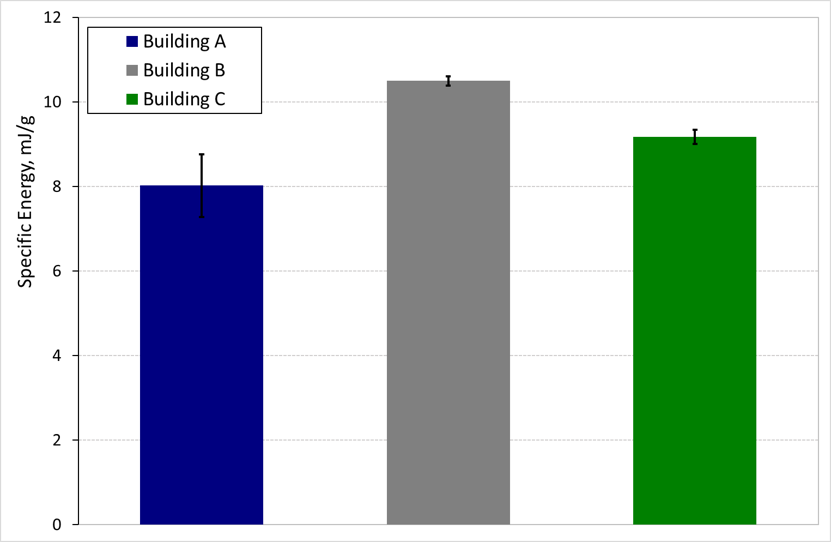
Samples of an Active Pharmaceutical Ingredient (API 1) were manufactured in three different locations, Building A, B and C. The API from Building B and C exhibited issues relating to inconsistent flow and blend uniformity, whereas the API from Building A consistently performed well. Samples from the three different locations were evaluated using the FT4 Dynamic Flow methodologies. Data from the tests show clear differentiation between the three samples. API 1 from Building A generated the lowest Basic Flowability Energy (BFE) and Specific Energy (SE) values, suggesting that this powder exhibited less resistance to dynamic flow. API 1 from Building B and C gave higher BFE and SE values suggesting a higher degree of resistance to forced flow and greater mechanical interlocking and inter-particular friction, both likely to contribute to the inconsistent flow and blend uniformity issues observed.
With this knowledge, processes employed in Building B and C can be modified and batches from those locations can be evaluated, prior to processing, to ensure that the properties are comparable with those from Building A and thereby compatible with the process.
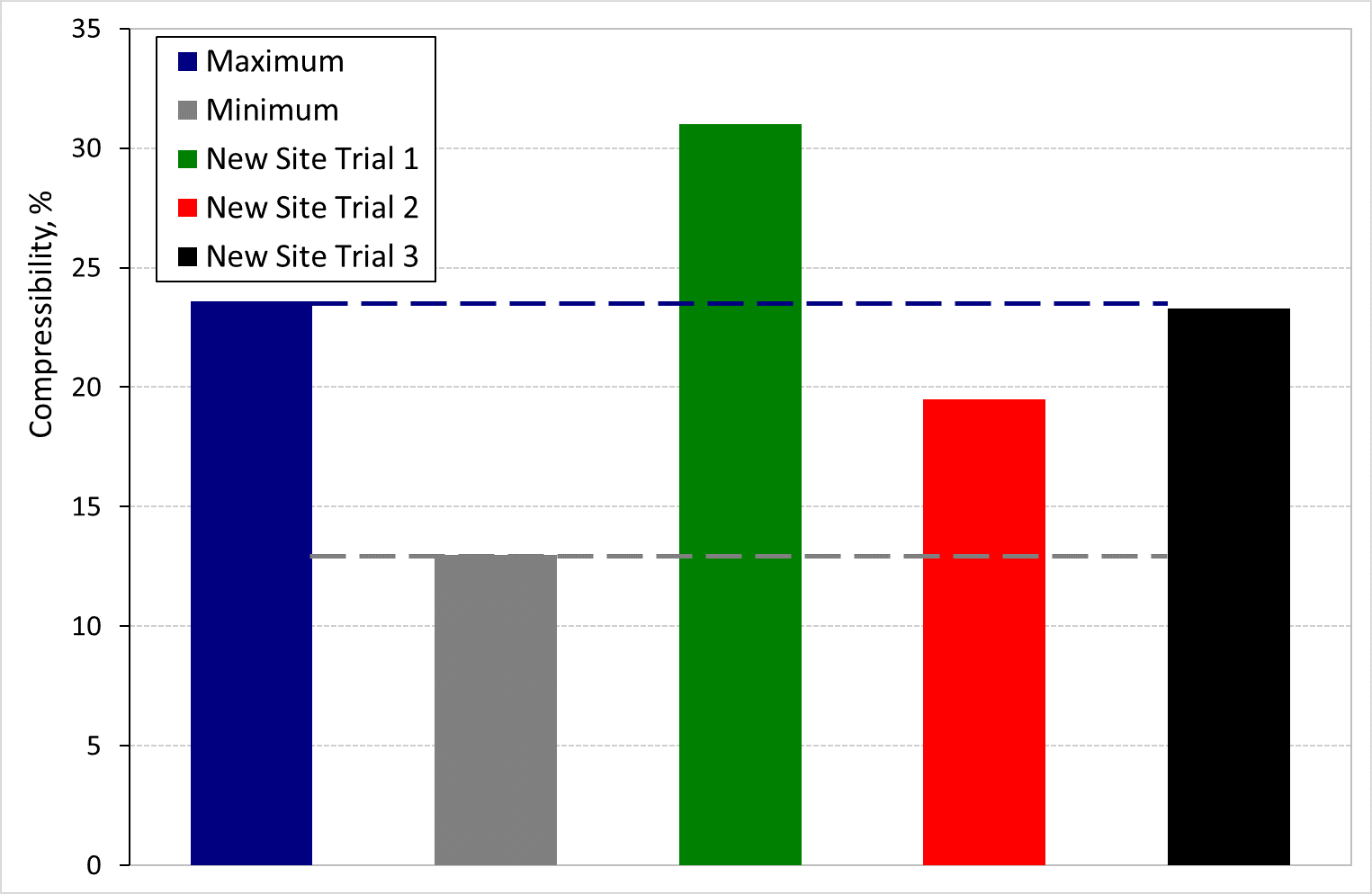
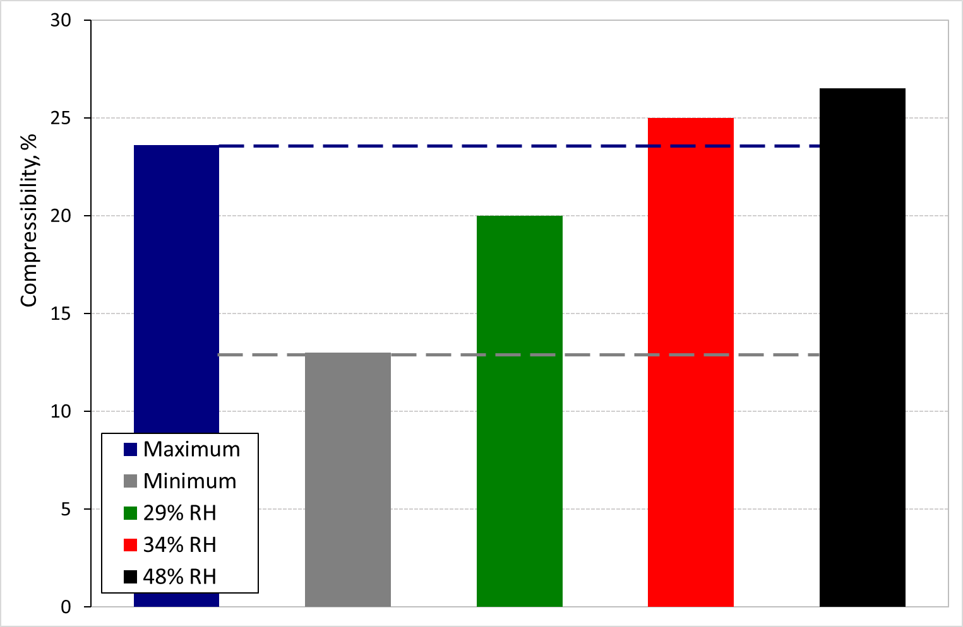
A second API (API 2) was used in a filling operation. Historical batches of the API had been characterised using a range of FT4 test methodologies, and Compressibility was found to be a key indicator of acceptable performance in the process. By assessing a range of samples, it was possible to determine acceptable limits for Compressibility. A new site began producing API 2 and handling issues were experienced during initial filling runs. A sample of the API was found to have a higher Compressibility, outside of the acceptable parameter space. Following this, the manufacturing process was modified, resulting in the next two batches having an acceptable Compressibility and, as expected, the powder subsequently performed well in the filling operation.
However, further issues were observed with changing weather conditions, specifically with respect to relative humidity. Powders processed at higher humidity levels (48% RH) exhibited poor performance. By evaluating the powder under the same environmental conditions, it was found that Compressibility increased with humidity and at a certain humidity, Compressibility exceeded previously defined limits. From this it was possible to determine an acceptable humidity range for the operation.
CASE STUDY 3 – API Milling Process
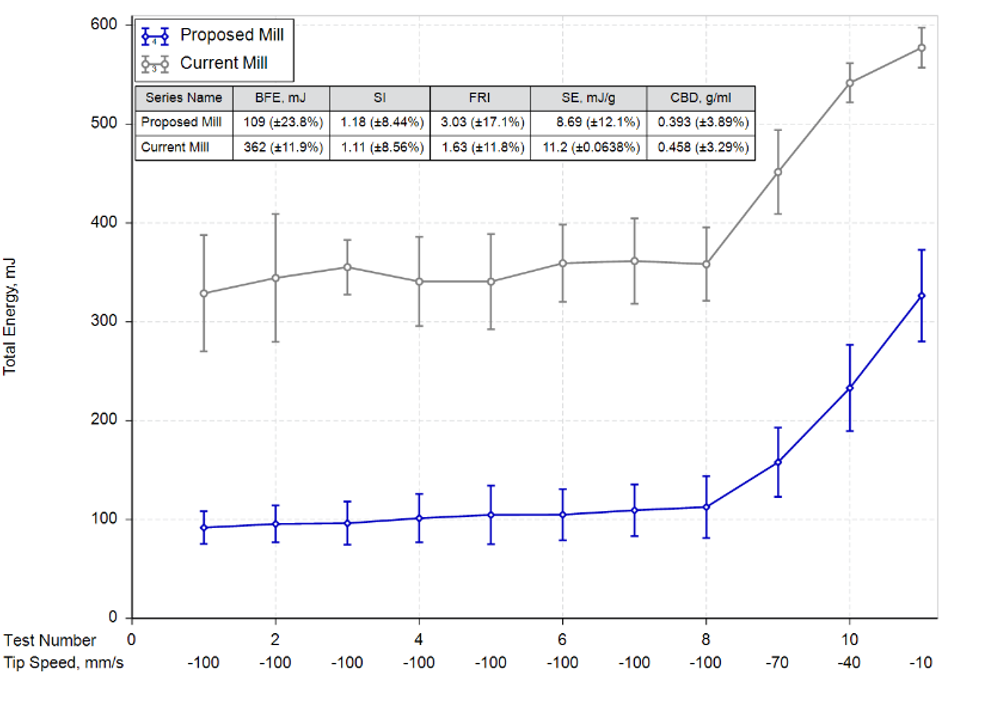
An active pharma ingredients manufacturer was evaluating new milling equipment. The proposed new equipment produced material with a similar particle size distribution (PSD) to the existing mill.
Four batches were prepared on each mill and assessed using the FT4. Significant differences were observed in the Dynamic Flow tests with the proposed mill generating product with a higher Flow Rate Index (FRI), and lower BFE, SE and Conditioned Bulk Density (CBD) values. These are properties typically associated with more cohesive materials suggesting that the powder produced in the proposed mill is more likely to be problematic during process.
Powder rheology has enabled differences in the powders’ flow properties to be detected that weren’t identified by evaluating particle size alone. Introducing the new process equipment could have been detrimental to production. The application of powder rheology highlighted this risk suggesting further investigations are undertaken or preventive measures implemented.
Conclusions
Successful troubleshooting and manufacturing support can be provided by the FT4 Powder Rheometer. Routine characterisation enables the user/operator to build up a knowledge database and can help determine the root cause of manufacturing issues. By understanding powder characteristics and their relationship with process outcomes, risks to changing raw material supplier or manufacturing method can be assessed.
The FT4’s multivariate test methods are ideally suited to characterising the range of process-relevant powder properties that will influence flowability in different processes, specifically by testing the samples under low-stress, dynamic conditions that generate process-relevant properties that can be correlated with process performance. The correlations can be used to construct a design space of powder properties that pertain to good performance, against which both new formulations, or incoming or outgoing batches, can be assessed to predict downstream behaviour.
Author Biography - Tim Freeman, Managing Director, Freeman Technology

Tim Freeman is Managing Director of powder characterisation company Freeman Technology for whom he has worked since the late 1990s. He was instrumental in the design and continuing development of the FT4 Powder Rheometer® and the Uniaxial Powder Tester. Through his work with various professional bodies, and involvement in industry initiatives, Tim is an established contributor to wider developments in powder processing.
Tim has a degree in Mechatronics from the University of Sussex in the UK. He is a mentor on a number of project groups for the Engineering Research Center for Structured Organic Particulate Systems in the US and a frequent contributor to industry conferences in the area of powder characterisation and processing. A past Chair of the American Association of Pharmaceutical Scientists (AAPS) Process Analytical Technology Focus Group Tim is a member of the Editorial Advisory Board of Pharmaceutical Technology and features on the Industry Expert Panel in European Pharmaceutical Review magazine. Tim is also a committee member of the Particle Technology Special Interest Group at the Institute of Chemical Engineers, Vice-Chair of the D18.24 sub-committee on the Characterisation and Handling of Powders and Bulk Solids at ASTM and a member of the United States Pharmacopeial (USP) General Chapters Physical Analysis Expert Committee (GC-PA EC).


Contact Us
Tel: (+86) 400 610 1188
WhatsApp/Telegram/Wechat: +86 13621645194
Follow Us:




 Pharma Sources Insight January 2025
Pharma Sources Insight January 2025


